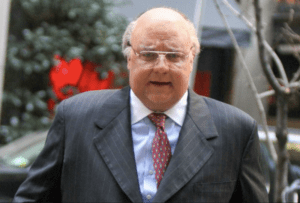‘The Goldfinch’ Flutters but Doesn’t Take Wing
There's plenty to like about the adaptation of Donna Tartt's 2014 novel, but the pacing is a problem. Nicole Kidman and Ansel Elgort in the big-screen adaptation of Donna Tartt's "The Goldfinch." (IMDb)
Nicole Kidman and Ansel Elgort in the big-screen adaptation of Donna Tartt's "The Goldfinch." (IMDb)
Back in 17th-century Holland, “The Goldfinch,” a diminutive trompe l’oeil painting by Carel Fabritius, depicted a colorful house pet chained to its feeder. Shortly after the painting was made, Fabritius, 32, died in a 1654 munitions explosion in Delft. Yet the painting survived.
Fabritius and Donna Tartt’s 2014 novel, “The Goldfinch,” have in common the painting and an explosion. Her Dickensian page-turner follows a 13-year-old who sees the painting with his mother at New York’s Metropolitan Museum of Art moments before a terrorist bomb levels a wing of the museum. Yet painting—and boy—survive.
Narrated by protagonist Theo Decker, the novel unfolds chronologically, stoking the reader’s emotional investment in his loss, displacement and future. Not so John Crowley’s eye-popping, narratively scrambled adaptation that opens like a noir, just before the story’s denouement.
Tricky thing, adapting a beloved novel for the screen. Crowley did a lovely job with “Brooklyn,” Colm Toibin’s portrait of a young Irish immigrant in America in the 1950s. That movie flowed.
Frustratingly—and I think it’s because of the many flash-forwards and flashbacks in Peter Straughan’s screenplay—this grief-shrouded film moves like molasses, inching back and forth for 2 ½ hours. (Straughan did the script for the similarly slow and elliptical 2011 film version of “Tinker, Tailor, Soldier, Spy.”)
Still, I watched the movie with equal parts interest and irritation—interest in how the young Theo (Oakes Fegley, quite fine) gets passed along, like the painting itself, to a series of caretakers who variously nurture or abuse him; irritation with the jumps in time and exasperation at the pacing.
One aspect of the film had my unalloyed appreciation: Roger Deakins’ cinematography has an emotive spectrum and depth lacking in some of the performances, particularly those of Ansel Elgort (adult Theo) and of Luke Wilson (his estranged father). The relative coolness and warmth, monochrome and polychrome of his imagery conveys emotional volumes. And when Theo has nightmares about the bombing, the faded image of his memories is quite startling.
The most significant adult performances come from Nicole Kidman and Jeffrey Wright as Theo’s caretakers, essentially his surrogate mother and father. Kidman’s Mrs. Barbour, a Park Avenue lady of pedigree, initially comes off chilly and stilted. Over the film’s course, her character ripens in compassion and is surprisingly touching. In a more consistent performance, Wright is quite moving as Hobie, an antiques restorer whose business partner, Blackwell, has died in the Met bombing.
Like Theo, Blackwell’s niece, Pippa (played by Aimee Laurence as a teenager and Ashleigh Cummings as an adult), also survives the bombing. For the young man, she is the only one who understands his loss and grief. His love for Pippa sustains him.
I liked the film more than not. While the story’s symbolism about surviving disaster and loss may be better suited to a novel than to a film, in the end the movie, like the painting for which it’s named, has the talismanic power. The goldfinch is chained to its feeder, as Theo is linked to the humans who sustain him.
Your support matters…Independent journalism is under threat and overshadowed by heavily funded mainstream media.
You can help level the playing field. Become a member.
Your tax-deductible contribution keeps us digging beneath the headlines to give you thought-provoking, investigative reporting and analysis that unearths what's really happening- without compromise.
Give today to support our courageous, independent journalists.



You need to be a supporter to comment.
There are currently no responses to this article.
Be the first to respond.